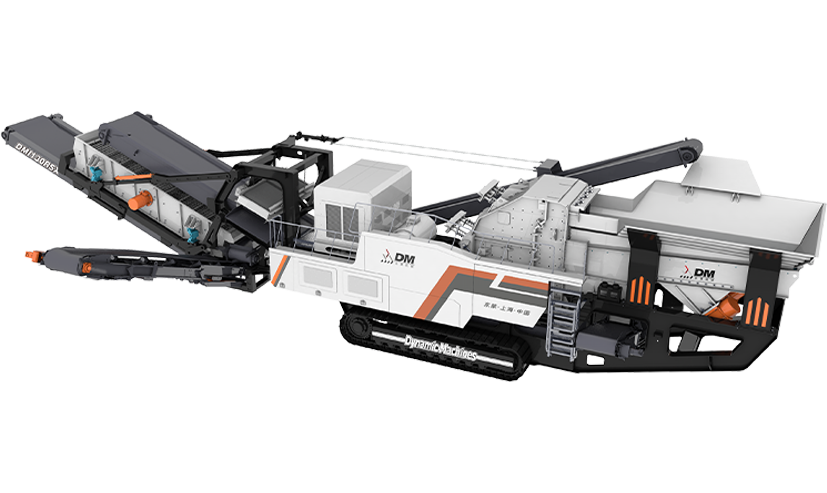Machinery Weight 55-72t
Max Feeding size(mm) ≤700mm
Hopper Volume(m³) /
Mobile Impact Crusher Factory equipment is designed to combine flexibility, efficiency, and durability in modern crushing operations. These machines are commonly deployed in mining, quarrying, construction waste recycling, and aggregate production. As production demands continue to grow, many operators rely on high-capacity output to remain competitive. However, the question arises: do these machines become more prone to failure under sustained heavy workloads? To answer this, it is necessary to examine structural design, operational practices, maintenance strategies, and the balance between efficiency and reliability.

Running machines at elevated production levels places significant strain on all mechanical systems. In mobile impact crushers, the rotor, bearings, hydraulic systems, and conveyors all experience increased load. If the equipment is not engineered to handle these conditions, the likelihood of failures such as bearing overheating, rotor imbalance, or hydraulic leakage increases. High throughput also accelerates wear on blow bars, liners, and screens, which can shorten the lifespan of these components. Thus, while high capacity improves output, it inevitably raises the risk of downtime unless carefully managed.
Modern crusher designs have evolved to counteract these challenges. Reinforced rotor assemblies, advanced metallurgy for wear parts, and heavy-duty chassis structures enable the machines to endure higher levels of stress. Hydraulic overload protection and automatic adjustment systems also help prevent damage during peak loads. Some factories incorporate modular components, making replacement faster and reducing the time machines remain offline. These engineering innovations are essential to ensure that crushers remain reliable even when production demands are at their peak.
Even with robust engineering, preventive maintenance remains a decisive factor in preventing failures. High-capacity operation accelerates wear, which means inspection and servicing intervals must be shortened. Lubrication of moving parts, monitoring of hydraulic oil quality, and timely replacement of wear-resistant elements are necessary to maintain performance. Advanced monitoring tools, such as vibration sensors and temperature tracking, provide early warning signs of potential problems. By addressing issues proactively, operators can reduce unexpected breakdowns and keep production steady.
Operator skill and adherence to practices play a critical role in reducing failure risks. Overfeeding the crusher, using inappropriate material sizes, or running equipment continuously without breaks can increase stress levels beyond design limits. Training operators to recognize warning signs, manage feed rates, and perform routine checks reduces the likelihood of equipment damage. In many cases, failures are not due to inherent design flaws but to improper operation that compounds the effects of high-capacity production.
Companies often face the dilemma of pushing machines to their limits to improve short-term output while risking long-term reliability. Running at capacity without adequate support systems can cause higher maintenance costs, frequent downtimes, and reduced overall efficiency. The more sustainable approach is to balance throughput with scheduled maintenance and optimized machine settings. By operating within recommended performance ranges, companies can extend the life of their equipment while still achieving high productivity.
High-capacity production undeniably increases the stress placed on mobile impact crushers, making the risk of failure more prominent. However, with strong engineering design, comprehensive maintenance programs, and disciplined operational practices, these risks can be effectively managed. The key lies in treating equipment not just as a tool for immediate output, but as a long-term asset requiring care and investment. When properly managed, mobile impact crushers can deliver both high productivity and reliability, ensuring sustainable success in demanding industries.
Machinery Weight 53-62t
Max Feeding size(mm) ≤600mm
Hopper Volume(m³) 80-360t/h
Machinery Weight 55-57t
Max Feeding size(mm) ≤215mm
Hopper Volume(m³) /
Machinery Weight 33-35t
Max Feeding size(mm) 150-400t/h
Hopper Volume(m³) 2.5
Machinery Weight 33t
Max Feeding size(mm) 150-400t/h
Hopper Volume(m³) 7m³
Machinery Weight 54-63t
Max Feeding size(mm) ≤600mm
Hopper Volume(m³) /
Machinery Weight 9.5-75t
Max Feeding size(mm) ≤1000mm
Hopper Volume(m³) 61-1204t/h
Just let we know what you want, and we will get in touch with you as soon as possible!